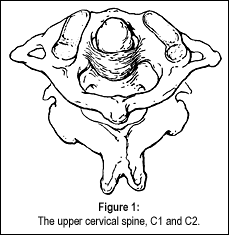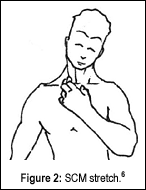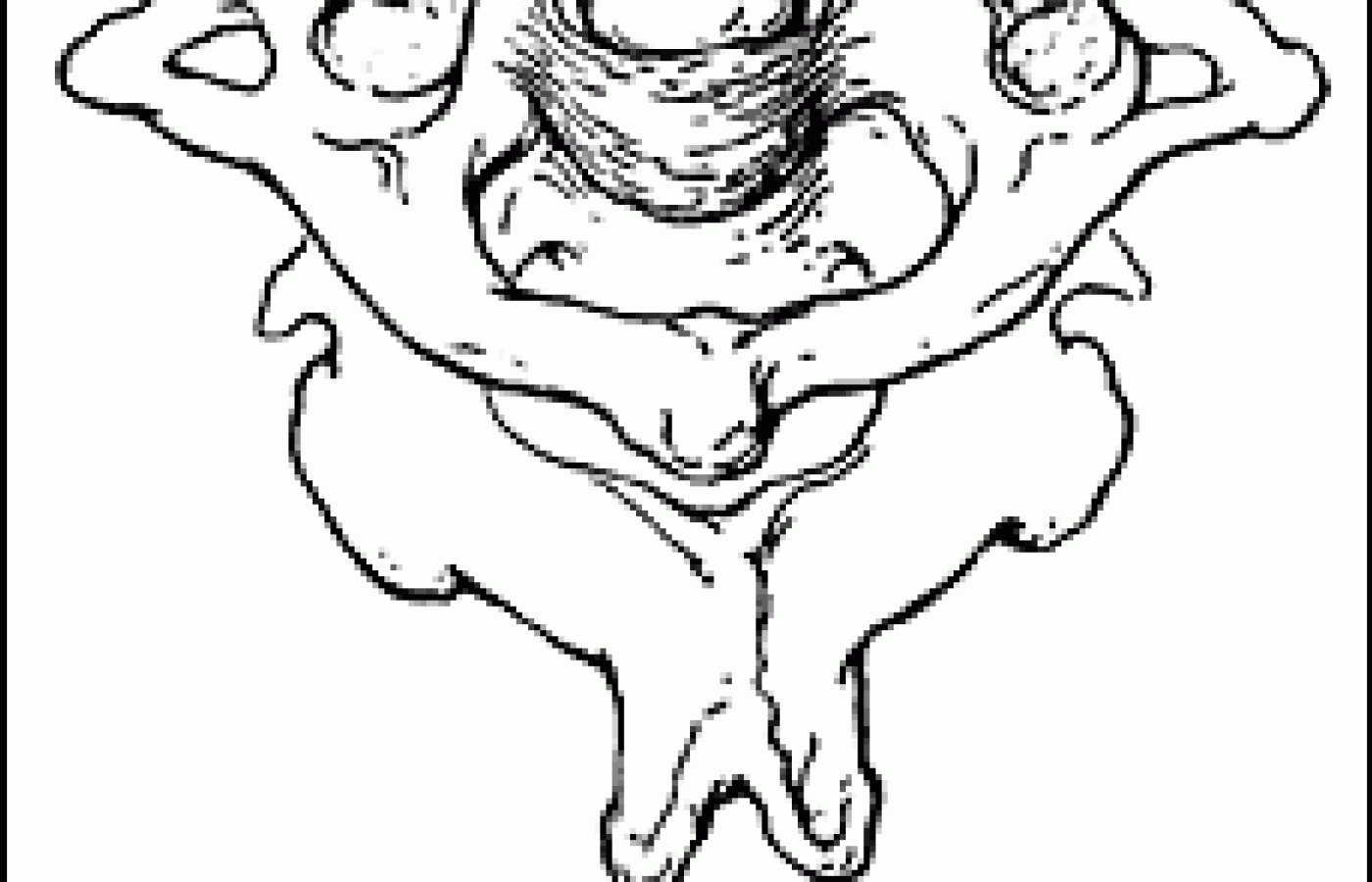Recent laws in New Jersey and California represent a disturbing trend that will negatively impact a practice’s ability to collect monies from patients, as well as expose them to significant penalties if the practice does not follow the mandatory guidelines to a T. Please be aware that a similar law may be coming to your state. The time to act is before the law is passed.
C1-C2
Let's look at the upper neck. First, I have to acknowledge the many chiropractors whom have spent their careers focusing on the upper cervical spine. I do not think my expertise in this area matches theirs, but I just want to add some simple thoughts, probably addressed more to diversified practitioners than to the upper cervical practitioners.
Though it's easier to feel the posterior arch of C1, don't forget to assess from lateral to medial, and from anterior to posterior. When the atlas is stuck forward, it creates big problems, which are only made worse by adjusting from behind. You can palpate for this and get accurate information, but remember to be gentle. Tenderness is always an excellent additional guide. The atlas area is very sensitive, so rough force will be painful for almost everyone.
C2 is always a puzzle. It is very frequently fixated, but this is deceptive. In my experience, and in the works of Jean Pierre Barral, C2 is almost always secondary: a witness to tensions in the rest of the body reflected in the neck. Once you learn how to use inhibition to prioritize subluxations, which I outlined in the September 12 issue of DC (http://www.chiroweb.com/archives/19/19/06.html), you will almost never adjust C2. A good rule of thumb is to balance everything else first; if C2 still shows up, then correct it.

You probably read enough of my articles to know that our work is about using minimal force. This is especially critical for the upper cervical spine, for two obvious and connected reasons: one is the real risk of vascular injury to the convoluted vertebral artery, which bends in the upper cervical spine; the second is the perceived risk of cervical adjustments due to media overkill. Whether the real risk is one in 100,000 or one in 10 million, if a stroke happens to your patient after you adjust him or her, the rarity of the event will not help you feel any better about the situation. I always attempt to correct the upper cervical spine with low force methods first. Whether you use ELF ("engage, listen, follow"), recoil, or an Activator, why not do this first and then recheck? If the problem persists or doesn't change, and has an articular, hard feel rather than a meningeal "gooey" feel, I proceed with a traditional adjustment, avoiding the combination of rotation and extension. Yes, I adjust the upper cervical region in my patients who need it, but I rarely do a high-velocity, low-amplitude thrust here. Low force adjustments are real and effective!
I won't try to share C2 methods, as I rarely use them. For the anterior or lateral C1 patterns, I use the simple ELF or recoil (engage-release), usually with the patient supine; occasionally done sitting or side-lying. I'll use a contact on the head to move the occiput in a countermotion to where I want the atlas to go.
I would like to share a specific technique for C1 when it is compressed against the occiput. This is the work of Alain Gehin, another European osteopathic teacher, who focuses on the cranium in most of his teaching. His excellent text is An Atlas of Manipulative Techniques for the Cranium and Face. This is primarily a one-handed technique, which involves holding the occiput with your third, fourth, and fifth fingers, while your index finger is placed on the posterior arch of the atlas. The patient is supine, with the head in "neutral," as you can't reach the atlas once the head tips back. You'll be far more effective with this technique if you tune into the cranial rhythm and release the atlas inferior during the expansion (flexion) phase. As you feel the occiput move into flexion, with its inherent movement taking it inferior and anterior, guide the atlas caudal away from the occiput. You do this by separating your index finger from your other fingers. Follow the rhythm four to 10 times, until you feel the atlas release.
Our tour of the upper cervical spine would be incomplete without at least a brief assessment of the musculature. I will refer you to an in-depth review of these concepts by Craig Liebenson,DC, in the Journal of Bodywork and Movement Therapy. Two of the significant players are the sternocleidomastoid (SCM) and the rectus capitus posterior minor. The SCM becomes hypertonic. It's easy to assess. Just gently pinch it between your thumb and second finger, working down from the upper neck; if the SCM has knots in it, and if it is tender, it probably needs to be released. Stretching this muscle is tricky.
Go to [url=http://www.marchellerdc.com]http://www.marchellerdc.com[/url] to download a wonderful stretch for this muscle. It involves teaching the patient to: 1. grab the SCM muscle (and at the same time); 2. lift the chest; 3. tuck the chin; 4. turn (rotate) toward the side of muscle involvement; and 5. tip (sidebend) away from the side of involvement. Once you do all of these simultaneously, you will feel a stretch in the SCM, right under your pinching hand. To get a stronger stretch, pull the muscle gently downward with your pinching fingers. You'd better try this yourself first before you try to show it to your client. Yes, it's complicated, but worth learning and teaching to your patients. Feel free to download the instructions and print them out for your patients.

The rectus capi-tus posterior minor is accessible through suboccipital trigger point work by adjusting the upper cervicals, as well as strengthening its antagonists, the deep lower cervical muscles, through a gentle sitting or supine chin-tuck. The key to an effective chin tuck is to activate strictly the deep cervical flexors, not the SCM or scalenes. Do this by having the patient Do this by having the patient lift the sternum as he or she pushes down with the chin. Provide a gentle resistance under the chin with one hand. While learning this, use the other hand to monitor how quiet the SCM and scalenes remain.
I hope these concepts are useful to you and your patients.
Resources
- Gehin, Alain. An Atlas of Manipulative Techniques for the Cranium and Face, Eastland Press.
- Barral, Jean Pierre. The Thorax, Eastland Press.
- Visceral Manipulation II. Upledger Institute, class notes.
- Heller M. On inhibition for prioritization. Dynamic Chiropractic, 2001;(19)19:26-28, http://www.chiroweb.com/archives/19/19/06.html.
- Liebenson C. Functional reactivation for neck pain patients. Journal of Bodywork and Movement Therapy 2002;(6)1:63-68.
- Heller M. "Basics of Rehab" seminars.



